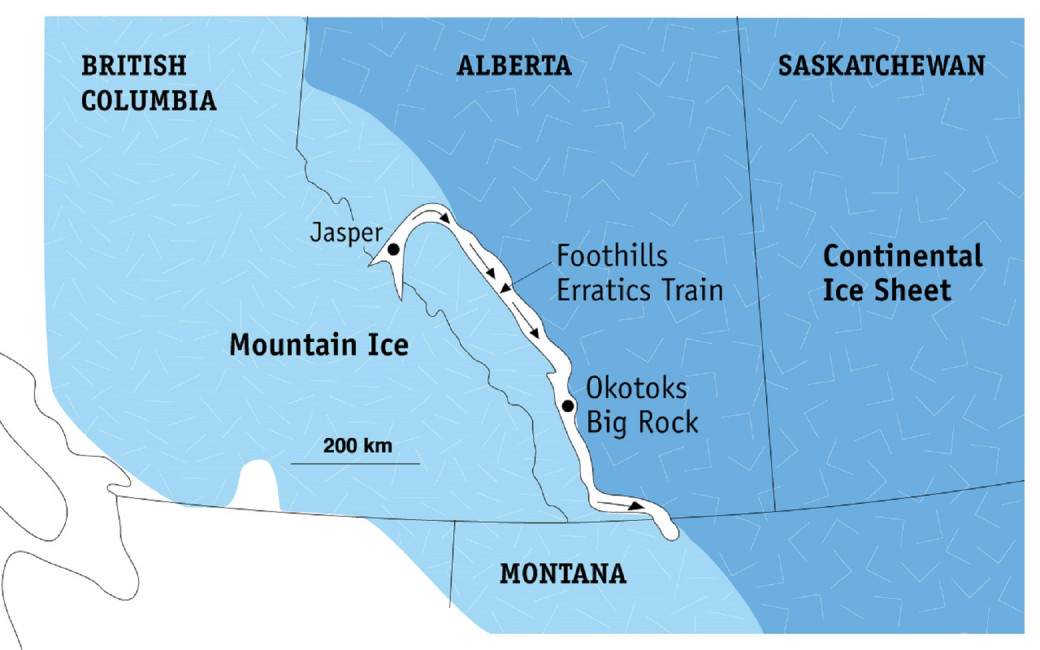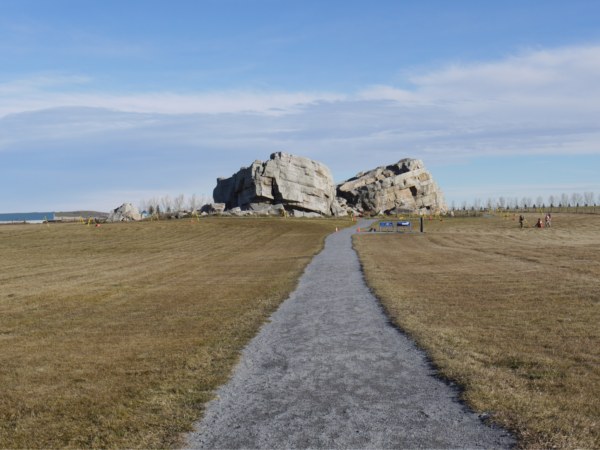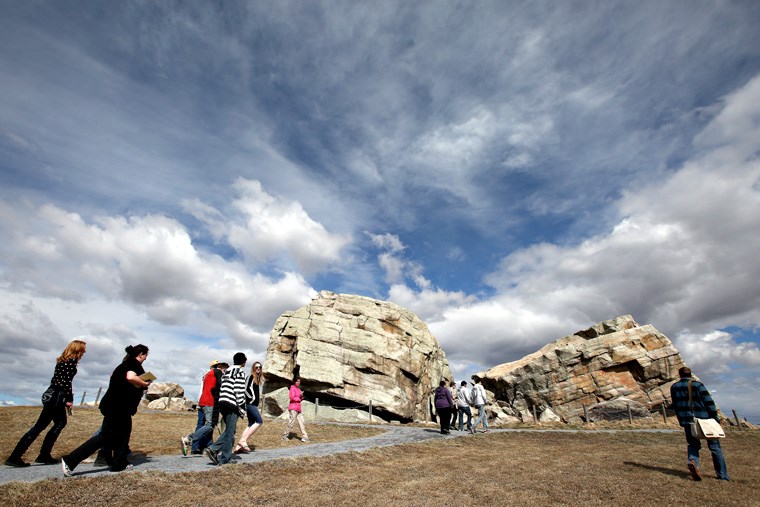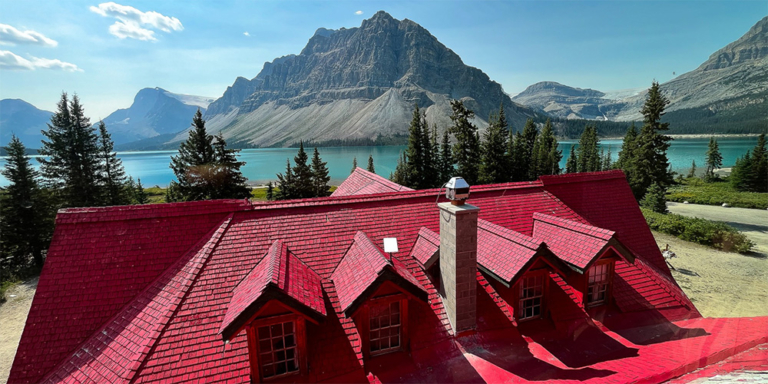One of our province’s most famous local celebrities has built an awe-inspiring reputation without ever uttering a word.
Some things just speak for themselves!
One of those things is a gigantic three-story apartment-sized quartzite rock smack dab in the middle of a dead-flat prairie.
The Okotoks Erratic, commonly known as “Big Rock,” is the world’s largest glacial erratic.
For those who don’t speak geologist, a “glacial erratic” is a boulder that essentially hitched a piggyback ride on a melting glacier, often being dropped off hundreds of kilometres from its original home.
It’s a pretty crazy phenomenon. Big Rock has had an even more mind-blowing trip than most.
The rock is made up of quartzite, a smooth, light grey, pink, or purplish stone that originates from sediment formed in a shallow sea that existed where Jasper now stands eons before the uplift of the Rocky Mountains.
Formed about 600 million years ago, Big Rock eventually fell from its Rocky Mountain perch in a rockslide onto a south-moving glacier, travelling about 600km before the glacier hit its melting point.
The melting glacier then dropped Big Rock off at its current resting spot about 10,000-12,000 years ago, where it’s remained ever since.
And we thought only birds migrated south!


Beyond Geology
But that’s only one side of Big Rocks’ story.
Known as Okotok, which translates to Rock in the Blackfoot language, there’s another even more captivating legend of how Big Rock came to be.


For Indigenous populations of Alberta, Big Rock holds a deep cultural and spiritual significance.
The site is home to a subtle variety of rock art.
Multiple panels of red ochre pictographs, handprints, small circles, inverted ‘v’s, dots, crosses and human figures adorn the rock. All pictographs curiously face south.
The Indigenous people who originally painted these haunting images used rock art for many purposes, from simple communication to ceremonial rituals.
Possibly, some of the art hinted at the legends passed down through generations by word of mouth about how Big Rock came to be.
As Stan Knowlton shared with Town and Country Today, there are a few versions of the story with some differing details. Still, they all teach the same overarching lesson.
“As long as you tell a story to the best of your ability, in the end, it all comes to mean the same thing,” he said.
The Legend
The legend all starts with Napi, a supernatural trickster in Blackfoot culture.
In his typical fashion, Napi had tricked someone out of a beautiful robe made of buffalo skin.
Seeking to teach Napi a lesson, the sun and the wind banded together to trick the trickster himself.
To begin with, the sun blasted unseasonably intense rays down on Napi, who just so happened to be lounging in the heavy robe near Big Rock.
As things warmed up, Napi didn’t want to continue wearing or carrying the robe, so he gave it to Okotok (Big Rock).
He told Okotok that he could keep the beautiful robe in exchange for letting him rest there, which Okotok gladly accepted.
But then, no sooner had Napi given up the robe and gone on his way; the wind blew in cold as ice, bringing rain that made Napi long for the warm Buffalo skin.
He was pretty sure Okotok wouldn’t be able to move to chase him if he took the robe back, so he decided to double back to the rock and retrieve his gift.
No sooner had he taken back the buffalo robe and gone on his way, however, than he heard a terrifying noise behind him.
The massive rock had begun rolling after him, seeking vengeance for Napi going back on his deal.
Napi ran for his life.


The deer, the bison and the pronghorn sheep were Napi’s friends, and they tried to stop the rock by running in front of it. Okotok rolled right over them.
In desperation, Napi called on the bats for help.
They swooped in on mass, diving at and colliding with the rock.
Eventually, one bat hit Okotok in his weak spot, and Okotok cracked in two.
Stopped in his tracks, he fell apart in the place where he still stands, split in half today.
Napi may have survived the encounter but he thought twice keeping his word after that.
Beyond the more apparent morals of this story, this passed-down history of Okotok makes a visit to see Big Rock resonate with the rich history the rock encompasses.
Located off Highway #7, about 10 kilometres southwest of Okotoks, 15 kilometres northeast of Black Diamond, or an hour’s drive from central Calgary, this iconic point of our land’s culture is worth the trek out to see.
Who knows what little aspects of its history you may uncover?
If you can’t make it to Big Rock to see it for yourself, you can take a 3-d tour here.








